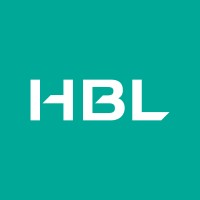Company Cyber Security Posture
NANA
NA Company Details
NA
NA
NA
NA
NA
NA
Scan still pending
NA
NA
Between 200 and 800
This score is AI-generated and less favored by cyber insurers, who prefer the TPRM score.
 NA Global Score
NA Global Score.png)

Company Scoring based on AI Models
| Model Name | Date | Description | Current Score Difference | Score |
|---|---|---|---|---|
| AVERAGE-Industry | 03-12-2025 | This score represents the average cybersecurity rating of companies already scanned within the same industry. It provides a benchmark to compare an individual company's security posture against its industry peers. | N/A | Between 200 and 800 |
Company Cyber Security News & History
| Entity | Type | Severity | Impact | Seen | Url ID | Details | View |
|---|
Company Subsidiaries

NA
Access Data Using Our API

Get company history
.png)
NA Cyber Security News
FM Sitharaman meets heads of PSBs; deposit growth, loan recovery, cybersecurity among top agenda - DETAILS
PSB Annual Review Meeting : Finance Minister Nirmala Sitharaman kicked off a high-level annual review meeting with Public Sector Banks (PSBs) on ...
RBI imposes Rs 25 lakh on Punjab and Sind Bank
The Reserve Bank of India on Friday imposed a penalty of Rs 25 lakh on Punjab and Sind Bank for non-compliance with certain provisions of directions.
Finance ministry cautions banks on cybersecurity robustness amid UCO Bank glitch
The finance ministry has asked state-owned banks to check their cybersecurity robustness and further strengthen them, media reports have shown.
Reserve Bank of India imposes Rs 25 lakh penalty on Punjab & Sind Bank
The Reserve Bank of India on Friday imposed a penalty of Rs 25 lakh on Punjab and Sind Bank for non-compliance with certain provisions of ...
Finance Minister approves 64 new CGM posts in public sector banks
The increase of CGM posts will enhance the capability of banks to better monitor critical positions such as digitalisation, cyber security, ...
Cybersecurity in Banks: Digital Era Strategies
Cybersecurity in Banks: Digital Era Strategies By: APAC News Network April 22, 2024 Reading Time: 4 mins read
RBI imposes Rs 25 lakh penalty on THIS Bank
The Reserve Bank of India (RBI) on Friday imposed a penalty of Rs 25 lakh on Punjab and Sind Bank for non-compliance with certain provisions of directions.
RBI alerts banks on heightened cyber security threats, gives action plan to address vulnerabilities, says report
The Reserve Bank of India (RBI) has cautioned some banks, urging them to fortify their defences against potential cyber attacks.
RBI Imposes Rs 25 Lakh Penalty on Punjab & Sind Bank
A penalty of Rs 62.50 lakh has been imposed on The Ahmedabad Mercantile Co-operative Bank, Ahmedabad; Rs 37.50 lakh on SVC Co-operative Bank, Mumbai; and Rs 25 ...

NA Similar Companies

National Bank of Egypt (NBE)
Since its inception in 1898 with a capital of GBP1 million, NBE has been regarded as one of the oldest and most respected commercial banks in Egypt.Never isolated from national issues or concerns, NBE has been the primary supporter of Egypt’s national economy by financing the major Egyptian national

LCL
Depuis son rapprochement avec le Groupe Crédit Agricole SA en 2003, le périmètre d'activités de LCL, réseau national de banque de détail, est axé sur le marché des particuliers, des professionnels, des entreprises et la Banque privée. LCL est une banque de proximité qui compte 2 065 implantations

Banco do Brasil
Eu experimentei um novo jeito de me comunicar com você. Você usa o mundo digital para criar um universo totalmente seu e nesse novo universo eu acompanho você. Eu sei… Você é muito mais que digital. Eu olho para você e me vejo. Este é um dos motivos de eu estar aqui para conversar com você. Eu s

AU SMALL FINANCE BANK
The dream started two decades ago by Mr. Sanjay Agarwal, a merit holder Chartered Accountant and a first generation entrepreneur, along with his proficient team. Together, the dexterous team embarked on a journey of excellence while enriching lives along the way. What started off as a dream to be

LIFE Financial Group
Финансовая группа «Лайф» — частный российский банковский холдинг. Обслуживает более 200 тысяч предприятий и почти 4 миллиона частных клиентов. По количеству отделений (более 800) группа входит в пятерку крупнейших российских банков. Включает Пробизнесбанк, Экспресс-Волгу (Саратов), Солидарность (Сам

HBL
HBL, Pakistan’s leading Bank, was the first commercial Bank to be established in Pakistan in 1947. Over the years, HBL has grown its branch network and maintained its position as the largest private sector Bank in Pakistan with over 1,728+ branches and 2,300+ ATMs globally, serving 37million+ client

Frequently Asked Questions
Explore insights on cybersecurity incidents, risk posture, and Rankiteo's assessments.
NA CyberSecurity History Information
How many cyber incidents has NA faced?
Total Incidents: According to Rankiteo, NA has faced 0 incidents in the past.
What types of cybersecurity incidents have occurred at NA?
Incident Types: The types of cybersecurity incidents that have occurred include .
Additional Questions
What Do We Measure?
















Every week, Rankiteo analyzes billions of signals to give organizations a sharper, faster view of emerging risks. With deeper, more actionable intelligence at their fingertips, security teams can outpace threat actors, respond instantly to Zero-Day attacks, and dramatically shrink their risk exposure window.
These are some of the factors we use to calculate the overall score:
Identify exposed access points, detect misconfigured SSL certificates, and uncover vulnerabilities across the network infrastructure.
Gain visibility into the software components used within an organization to detect vulnerabilities, manage risk, and ensure supply chain security.
Monitor and manage all IT assets and their configurations to ensure accurate, real-time visibility across the company's technology environment.
Leverage real-time insights on active threats, malware campaigns, and emerging vulnerabilities to proactively defend against evolving cyberattacks.




